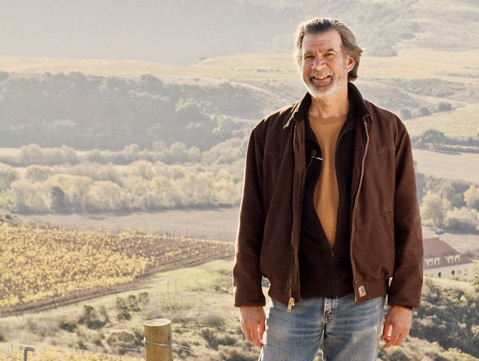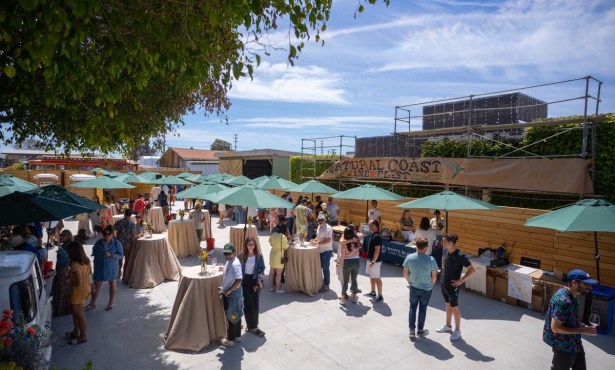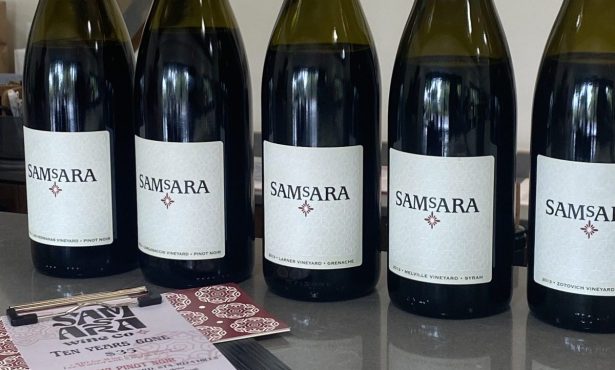A Taste of the Longoria Legacy
30 Years of Santa Barbara Winemaking for Richard Longoria

Amidst winemaking jobs for other California brands since the mid-1970s, Richard Longoria has been making his own Santa Barbara County pinot noirs and chardonnays under the Longoria Wines label since 1982. That’s led to a lot of accolades over the past 30 years, but Rick and his wife Diana are particularly thrilled about the latest: having their Longoria 2009 Fe Ciega Vineyard Pinot Noir listed as #10 on Wine Enthusiast magazine’s Top 100 Cellar Selection Wines of 2012.
Coming from their cliffhanging estate vineyard in the Sta. Rita Hills, the wine shows off the deep, dark power that the appellation is famous for, but does so with the soft, delicate restraint of a veteran vintner. That alone made it a popular bottle at the Longoria tasting rooms — one in a quaint, old house in the middle of Los Olivos, the other in the Lompoc Wine Ghetto, where Rick was one of the early pioneers — and the recent publicity has only pushed it closer to selling out.
A few days ago, Rick Longoria took a few minutes out of his schedule to answer some of my questions. So read on, but get yourself a bottle before it’s gone — and then make sure to wait a few years before popping the cork.
In a business where many people live harvest to harvest and need to sell this year’s releases as fast as possible, why in the world would one go about making “collectible” wines?
I think the slogan that we developed after our first vintage, “Artistry in Winemaking Since 1982,” really explains the philosophy of our winery. I am not an entrepreneur at heart, so I concentrate on making the best wines possible, which I hope can command a high enough price to make our small production financially viable.
After 30 years, I can safely say that sticking to this goal and business plan has worked for us. There are many of my peers that have built up larger production businesses and have reaped the financial rewards that come with that, but Diana and I have been content with our small, 3,000-case production. It’s allowed me to still be hands on with my wines on a daily basis, and kept my days on the sales road to a minimum.
Was ageability intentional in this particular wine, compared to your other bottlings? If so, what winemaking or wine growing techniques do you employ to achieve that?
The pinot noir from our estate vineyard, Fe Ciega, has always produced a particularly age-worthy wine since the first vintage in 2001. I feel it’s a result of the high clay content of our site’s soil, and the fact that I am very strict with the crop size, averaging around 2.5 tons per acre.
The 2009 wine was fermented and aged the same as other vintages, which is to say destemming 100 percent of the grapes, fermenting in small 1.5 ton fermenters, with an average of 14 days total time on the skins. The wine is inherently fairly tannic for a Pinot Noir, so I don’t feel the need for a lot of new oak to compensate for lack of tannins. I like to preserve the purity of the varietal and vineyard character, so I limit new oak to about 33 percent each vintage.



